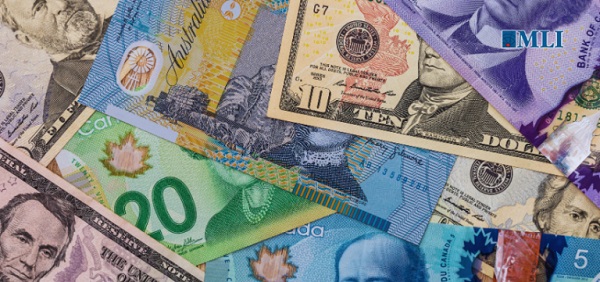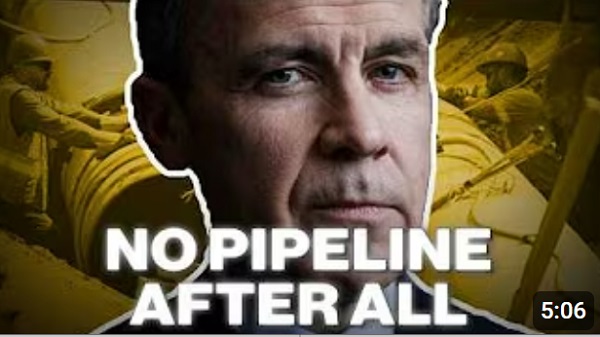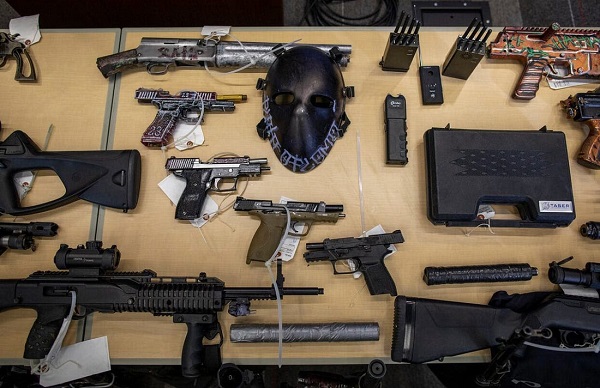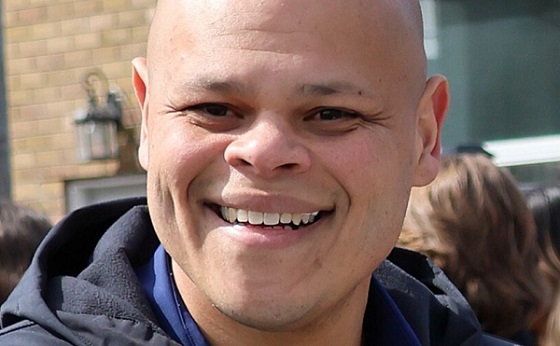Business
Canada can – and should – crack down on trade-based money laundering

From the Macdonald Laurier Institute
By Jamie Ferrill for Inside Policy
Neglecting to take decisive action enables organized criminal networks whose activities cause significant harm on our streets and those of our international partners.
Financial crime bears considerable political and economic risk. For the incoming Trump administration, the threat that transnational organized crime and the illicit financial flows pose to global financial stability is a top priority. The threat of tariffs by the Trump administration makes the costs to Canada in enabling global financial crime all too apparent. In addition to the cost of tariffs themselves, the associated reputational risk and loss of confidence in Canada’s financial system has implications for investments, credit, supply chains, and bilateral co-operation and agreements.
Canada’s proximity to major international markets, stable economy, high standard of living, and strong institutions and frameworks make it an attractive place to do business: for both legitimate and criminal enterprises.
Trade is a key contributing sector for Canada’s economic security. It represents two-thirds of Canada’s GDP, and exports alone support nearly 3.3 million Canadian jobs. Trade is also highly vulnerable to criminal exploitation. Ineffective oversight, regulatory complexity, and lagging technology adoption, coupled with a lack of export controls, make it possible to move vast proceeds of crimes, such as those from drug trafficking, human trafficking, corruption, and tax evasion through the global trade system.
These vulnerabilities are well-known by transnational organized crime groups. They are able to effectively move billions of dollars of dirty money through the global trade system every year, a method commonly referred to as Trade-Based Money Laundering (TBML).
While any statistics must be interpreted with caution, evidence shows that TBML is a prevalent method of money laundering.
What is it?
There are several types of Trade-Based Financial Crimes such as terrorism financing through trade, sanctions evasion, and simply trade fraud. However, the TBML definition is necessarily specific. Essentially here, TBML is a money laundering method: the processing of criminal proceeds to disguise their illegal origin. TBML involves the movement of value through the global trade system to obfuscate the illicit origin. This is usually done through document fraud: undervaluing, overvaluing, phantom shipping, or multiple invoicing. Different techniques employ different aspects of the supply chain. And TBML may be just one method used within larger money laundering operations.
By way of example, US authorities allege that two Chinese nationals living in Chicago laundered tens of millions of dollars for the Sinaloa and Jalisco Cartels. Drugs were smuggled into the United States and sold throughout the country. The proceeds from these sales were collected by the Chinese nationals. Those proceeds were used to purchase bulk electronics in the United States, which were then shipped – with a falsified value – to co-conspirators in China, who sold them locally. The legitimacy provided by the electronics sales and the trade transaction provide cover to “clean” proceeds from precursor crime.
Either the importer and/or the exporter of the goods can shift value. Chances here are the electronics shipped were undervalued: on leaving the country, they are declared at a (much) lower value than they are actually worth. The importer in China pays the undervalued invoice, then sells the goods for what they are worth. The profit from those electronics now appears clean, since it was used for a “legitimate” sale. The ensuing value gap can be transferred informally or stored as illicit wealth. The value has now shifted, without fiat currency leaving the country of origin.
But the cycle does not stop there. The value and money itself continue to traverse around the world, through various intermediaries such as financial institutions or cryptocurrency exchanges. It then goes right back into the system and enables the very crimes and organized crime groups that generated it in the first place. It is, in short, the business model of organized crime.
The Canadian problem
Ultimately, the proceeds of crime that have been legitimised through TBML (and other money laundering methods) supports the criminal enterprises that generated the value in the first place. In the example, these are prolific cartels who have been behind the fentanyl crisis, migrant trafficking and abuse, corruption, and widespread violence that destabilizes communities and undermines governments across North America and beyond.
With new actors, drug routes, and ways of doing business, the cartels are very much active in Canada. The Sinaloa cartel in particular has established a significant presence in Canada where it controls the cocaine market, manufactures and distributes fentanyl, and is embedded in local criminal networks. This increases Canada’s role as a strategic location for drug trafficking and a base to export abroad, notably to Europe, the US, and Australia.
Hells Angels, Red Scorpions, ’Ndrangheta, and other organized crime groups are also exploiting Canada’s strategic location using their transnational links. These groups are active in criminal activities that generate proceeds of crime, which they launder through Canadian institutions. From drug trafficking to extortion to human and sex trafficking, the foundation of organized crime relies on generating and maximizing profits. The proceeds generally need to be laundered; otherwise, there are direct lines back to the criminal organizations. They are, without a doubt, exploiting the trade sector; the very sector that provides so much economic security for Canada.
Canada’s regulation, reporting, and prosecution record for money laundering is notoriously weak. Its record for regulation, reporting, and prosecution for trade-based financial crimes, namely here TBML, is even weaker.
As financial institutions and other regulated entities face increased scrutiny following the TD Bank scandal and the Cullen Commission’s inquiry into money laundering in BC, more criminal activity is likely to be displaced into the trade sector and the institutions it comprises.
TBML is difficult for financial institutions to detect, especially given that 80 per cent of trade is done through open accounts. It exploits established trade structures that are meant to protect the system –like documentation and invoicing processes – by manipulating transactions outside traditional payment systems, which requires more sophisticated anti-money laundering strategies to address these hidden vulnerabilities.
Addressing the problem
Trade is a gaping vulnerability. Yet, it attracts minimal attention in countering transnational financial crime. Containing the fentanyl crisis for one requires a collaborative effort to bolster supply chains and the trade sector against financial crime. This means global cooperation, technological advances (such as blockchain technology), appropriate resourcing, more scrutiny on high-risk countries and shippers, and regulatory innovation.
But political will is in short supply. The federal government’s Budget 2024 and the resulting proposed Regulations Amending Certain Regulations Made Under the Proceeds of Crime (Money Laundering) and Terrorism Financing Act will grant CBSA new authorities to counter TBML, but limited resources to make good on them. And CBSA cannot do it alone.
Transnational organized crime and the illicit financial flows that support it poses a threat to global financial stability. The enabling of financial crime hurts Canada’s reputation abroad. With a new political regime emerging in the US, Canada cannot afford to be seen as a weak link. Loss of confidence in a country and its financial system has implications for investments, credit, supply chains, and bilateral cooperation and agreements.
By neglecting to take decisive action, we inadvertently enable organized criminal networks whose activities cause significant harm on our streets and those of our international partners. With profits as their primary driver, it is imperative that we scrutinize financial pathways to disrupt these illicit operations effectively.
Organized crime groups are not bound by privacy laws, bureaucracy, political agendas, and government budgets. They are continually evolving and staying many steps ahead of what Canada is equipped to control: technologically, geographically, strategically, logistically, and tactically. Without appropriate regulations, technological advances, and resources in place, we will continue to be a laggard in countering financial crime.
More systematic change is needed across regulatory frameworks, law enforcement coordination and resourcing, and international partnerships to strengthen oversight, close loopholes, and enhance detection and disruption. It would be a low-cost signal to the Trump administration that Canada is committed to upping its game.
Jamie Ferrill is senior lecturer in Financial Crime at Charles Sturt University and co-editor of Dirty Money: Financial Crime in Canada.
Business
Major tax changes in 2026: Report

The Canadian Taxpayers Federation released its annual New Year’s Tax Changes report today to highlight the major tax changes in 2026.
“There’s some good news and bad news for taxpayers in 2026,” said Franco Terrazzano, CTF Federal Director. “The federal government cut income taxes, but it’s hiking payroll taxes. The government cancelled the consumer carbon tax, but it’s hammering Canadian businesses with a higher industrial carbon tax.”
Payroll taxes: The federal government is raising the maximum mandatory Canada Pension Plan and Employment Insurance contributions in 2026. These payroll tax increases will cost a worker up to an additional $262 next year.
For workers making $85,000 or more, federal payroll taxes (CPP and EI tax) will cost $5,770 in 2026. Their employers will also be forced to pay $6,219.
Income tax: The federal government cut the lowest income tax rate from 15 to 14 per cent. This will save the average taxpayer $190 in 2026, according to the Parliamentary Budget Officer.
Carbon taxes: The government cancelled its consumer carbon tax effective April 1, 2025. However, the government still charges carbon taxes through its industrial carbon tax and a hidden carbon tax embedded in fuel regulations.
The industrial carbon tax will increase to $110 per tonne in 2026. While the government hasn’t provided further details on how much the industrial carbon tax will cost Canadians, 70 per cent of Canadians believe businesses pass on most or some of the cost of the tax to consumers, according to a Leger poll.
Alcohol taxes: Federal alcohol taxes are expected to increase by two per cent on April 1, 2026. This alcohol tax hike will cost taxpayers about $41 million in 2026-27, according to industry estimates.
First passed in the 2017 federal budget, the alcohol escalator tax automatically increases excise taxes on beer, wine and spirits every year without a vote in Parliament. Since being imposed, the alcohol escalator tax has cost taxpayers about $1.6 billion, according to industry estimates.
“Canadians pay too much tax because the government wastes too much money,” Terrazzano said. “Canadians are overtaxed and need serious tax cuts to help make life more affordable and our economy more competitive.
“Prime Minister Mark Carney needs to significantly cut spending, provide major tax relief and scrap all carbon taxes.”
You can read the CTF’s New Year’s Tax Changes report here.
Business
Inflation Reduction Act, Green New Deal Causing America’s Energy Crisis


From the Daily Caller News Foundation
By Greg Blackie
Our country is facing an energy crisis. No, not because of new demand from data centers or AI. Instead, it’s because utilities in nearly every state, due to government imposed “renewable” mandates, self-imposed mandates, and the supercharging of the Green New Scam under the so-called “Inflation Reduction Act,” have been shutting down vital coal resources and building out almost exclusively intermittent and costly resources like solar, wind, and battery storage.
President Donald Trump understands this, and that is why on day one of his administration he declared an Energy Emergency. Then, a few months later, the President signed a trio of Executive Orders designed to keep our “beautiful, clean coal” burning and providing the reliable, baseload, and affordable electricity Americans have benefitted from for generations.
Those orders have been used to keep coal generation online that was slated to shut down in Michigan and will potentially keep two units operating that were scheduled to shut down in Colorado this December. In Arizona, however, the Cholla Power Plant in Navajo County was shuttered by the utility just weeks after Trump explicitly called out the plant for saving in a press conference.
Dear Readers:
As a nonprofit, we are dependent on the generosity of our readers.
Please consider making a small donation of any amount here.
Thank you!
Unlike states with green mandates, Arizona essentially has none. Instead, our utilities, like many around the country, have self-imposed commitments to go “Net Zero” by 2050. To meet that target, they have planned to shut down all coal generation in the state by 2032 and plan to build out almost exclusively solar, wind, and battery storage to meet an expected explosive growth in demand, at a cost of tens of billions of dollars. So it is no surprise that like much of the rest of the country, Arizona is facing an energy crisis.
Taking a look at our largest regulated utilities (APS, TEP, and UNS) and the largest nonprofit utility, SRP, future plans paint an alarming picture. Combined, over the next 15 years, these utilities expect to see demand increase from 19,200 MW to 28,000 MW. For reference, 1,000 MW of electricity is enough to power roughly 250,000 homes. To meet that growth in demand, however, Arizonans will only get a net increase of 989 MW of reliable generation (coal, natural gas, and nuclear) compared to 22,543 MW (or nearly 23 times as much) of intermittent solar, wind, and battery storage.
But what about all of the new natural gas coming into the state? The vast majority of it will be eaten up just to replace existing coal resources, not to bring additional affordable energy to the grid. For example, the SRP board recently voted to approve the conversion of their Springerville coal plant to natural gas by 2030, which follows an earlier vote to convert another of their coal plants, Coronado, to natural gas by 2029. This coal conversion trap leaves ratepayers with the same amount of energy as before, eating up new natural gas capacity, without the benefit of more electricity.
So, while the Arizona utilities plan to collectively build an additional 4,538 MW of natural gas capacity over the next 15 years, at the same time they will be removing -3,549 MW (all of what is left on the grid today) of coal. And there are no plans for more nuclear capacity anytime soon. Instead, to meet their voluntary climate commitments, utilities plan to saddle ratepayers with the cost and resultant blackouts of the green new scam.
It’s no surprise then that Arizona’s largest regulated utilities, APS and TEP, are seeking double digit rate hikes next year. It’s not just Arizona. Excel customers in Colorado (with a 100% clean energy commitment) and in Minnesota (also with a 100% clean energy commitment) are facing nearly double-digit rate hikes. The day before Thanksgiving, PPL customers in Rhode Island (with a state mandate of 100% renewable by 2033) found out they may see rate hikes next year. Dominion (who has a Net Zero by 2050 commitment) wanted to raise rates for customers in Virginia by 15%. Just last month, regulators approved a 9% increase. Importantly, these rate increases are to recover costs for expenses incurred years ago, meaning they are clearly to cover the costs of the energy “transition” supercharged under the Biden administration, not from increased demand from data centers and AI.
It’s the same story around the country. Electricity rates are rising. Reliability is crumbling. We know the cause. For generations, we’ve been able to provide reliable energy at an affordable cost. The only variable that has changed has been what we are choosing to build. Then, it was reliable, dispatchable power. Now, it is intermittent sources that we know cost more, and that we know cause blackouts, all to meet absurd goals of going 100% renewable – something that no utility, state, or country has been able to achieve. And we know the result when they try.
This crisis can be avoided. Trump has laid out the plan to unleash American Energy. Now, it’s time for utilities to drop their costly green new scam commitments and go back to building reliable and affordable power that generations to come will benefit from.
Greg Blackie, Deputy Director of Policy at the Arizona Free Enterprise Club. Greg graduated summa cum laude from Arizona State University with a B.S. in Political Science in 2019. He served as a policy intern with the Republican caucus at the Arizona House of Representatives and covered Arizona political campaigns for America Rising during the 2020 election cycle.
-

 Digital ID3 hours ago
Digital ID3 hours agoCanada releases new digital ID app for personal documents despite privacy concerns
-

 Business14 hours ago
Business14 hours agoMajor tax changes in 2026: Report
-

 Media2 days ago
Media2 days agoReporters determined to drive their industry and its reputation into the abyss one Tweet at a time
-

 Energy3 hours ago
Energy3 hours agoCanada’s sudden rediscovery of energy ambition has been greeted with a familiar charge: hypocrisy
-

 Alberta15 hours ago
Alberta15 hours agoSchools should go back to basics to mitigate effects of AI
-

 Daily Caller14 hours ago
Daily Caller14 hours agoChinese Billionaire Tried To Build US-Born Baby Empire As Overseas Elites Turn To American Surrogates
-

 Crime2 days ago
Crime2 days agoTerror in Australia: 12 killed after gunmen open fire on Hanukkah celebration
-

 Crime2 days ago
Crime2 days agoHero bystander disarms shooter in Australian terror attack











